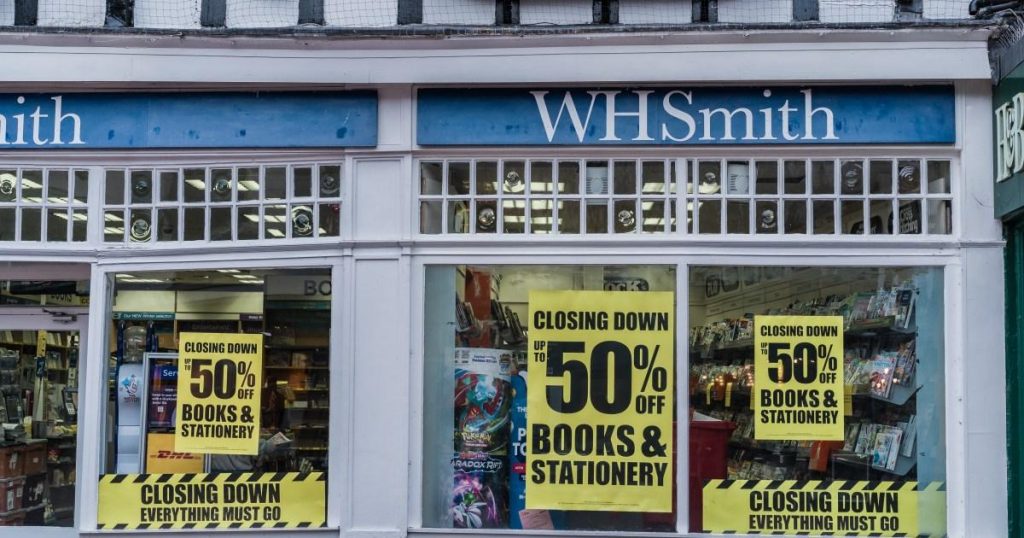The British high street continues to face significant challenges in 2025, following a dismal 2024 that saw over 13,000 store closures. The Centre for Retail Research predicts a further 17,349 closures in the current year, painting a bleak picture for traditional retail. This ongoing trend is driven by a confluence of factors, including the rise of online shopping, changing consumer habits, and the lingering economic impact of recent global events. The shift away from physical stores poses a serious threat to the vitality of town centres and the employment opportunities they provide. While some retailers are adapting by focusing on online platforms and enhancing in-store experiences, others are struggling to remain competitive in this rapidly evolving landscape. The closure of flagship stores on prominent shopping streets like Oxford Street serves as a stark reminder of the pressures facing even well-established brands.
February 2025 exemplifies this ongoing trend, with several well-known retailers announcing store closures across the UK. WHSmith, a familiar presence on the high street, is closing four branches as part of a strategic shift towards travel hubs. This reflects a broader trend of retailers prioritizing locations with high foot traffic and captive audiences, such as airports, train stations, and motorway service areas. Supermarket giant Sainsbury’s also closed a branch in London, citing the landlord’s redevelopment plans. This highlights another challenge facing retailers: the repurposing of retail spaces for alternative uses, further diminishing the high street’s footprint. Iceland, a popular frozen food retailer, shuttered a London branch without disclosing specific reasons, while Farmfoods closed a store in Banbury but expressed intentions to open a new location in the area, demonstrating a mixed bag of closures and potential relocations.
The closures extend beyond the grocery sector, impacting various retail segments. The Entertainer, a toy retailer, closed a branch in Croydon due to the landlord’s redevelopment plans for the shopping centre. This recurring theme of redevelopment underscores the ongoing transformation of retail spaces, often leading to the displacement of existing businesses. Hollister, a US clothing brand, announced plans to close its Aberdeen store but indicated its intention to explore new opportunities in the UK, suggesting a strategic recalibration rather than a complete retreat. These closures collectively illustrate the diverse challenges facing retailers, from changing consumer preferences to landlord decisions and the need for strategic realignment.
The reasons behind these closures are multifaceted and reflect the broader trends affecting the retail industry. The rise of e-commerce has undeniably played a significant role, providing consumers with convenient alternatives to traditional brick-and-mortar stores. The COVID-19 pandemic accelerated this shift, as lockdowns forced consumers to embrace online shopping, further solidifying the dominance of e-commerce platforms. Changing consumer habits also contribute to the decline of the high street, with younger generations increasingly prioritizing experiences over material possessions. This shift in spending patterns impacts retailers of non-essential goods, as consumers allocate their disposable income towards travel, entertainment, and other experiential pursuits.
The economic climate further exacerbates these challenges. Rising inflation, increased energy costs, and supply chain disruptions have put pressure on retailers’ margins, making it increasingly difficult to operate profitably. These economic headwinds disproportionately affect smaller, independent retailers, who often lack the resources to weather such storms. The cumulative effect of these factors creates a challenging environment for high street retailers, forcing them to adapt or face closure. The future of the high street remains uncertain, and its survival will likely depend on the ability of retailers to innovate, embrace new technologies, and create compelling experiences that attract and retain customers.
The ongoing decline of the high street raises concerns about the future of town centres and the communities they serve. The closure of shops leads to job losses, reduced foot traffic, and a decline in the overall vibrancy of these areas. Local authorities and community groups are exploring ways to revitalize town centres, such as promoting independent businesses, creating community spaces, and attracting new investment. The long-term success of these initiatives will depend on a collaborative effort between businesses, local government, and community stakeholders to create a sustainable and attractive environment for residents and visitors alike. The high street faces a critical juncture, and its future will be determined by the ability of all stakeholders to adapt to the changing retail landscape and create a compelling vision for the future of town centres.


